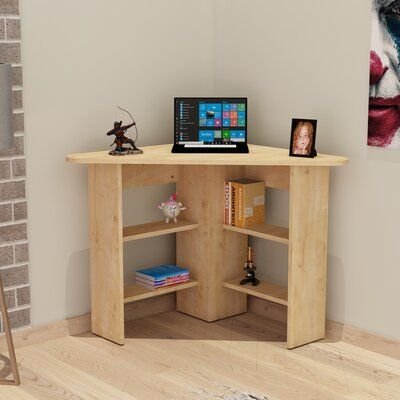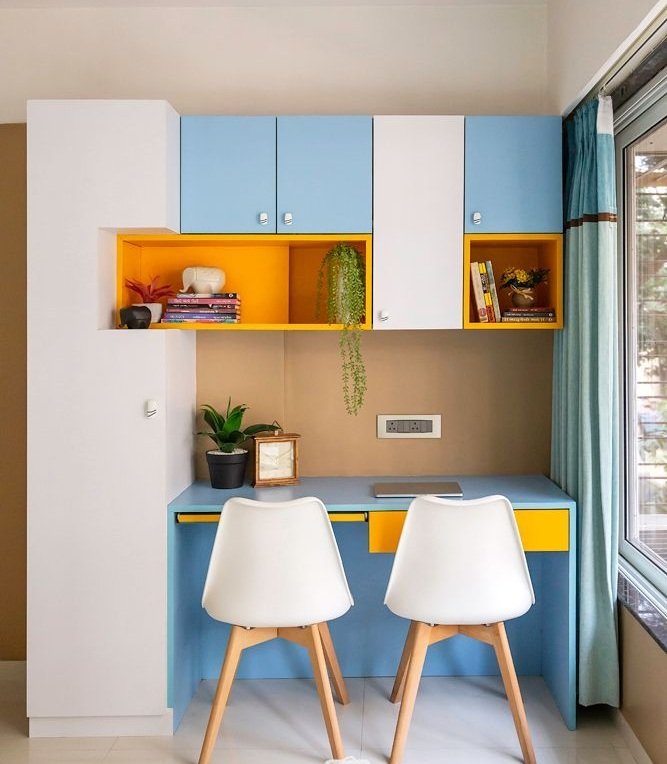Which colors are best for study table

Have you ever wondered Which colors are best for study table? Creating the perfect learning environment is crucial for effective learning. And an often overlooked aspect of this environment is the color scheme of your study space. Believe it or not, colors can have a significant impact on our mood, concentration and focus. So if you want to increase your productivity and make studying a breeze, it’s time to delve into the world of colors and find out which ones are best for your study space. Let’s explore how different hues can transform your space into a hub of inspiration and success!
The role of colors in creating a productive learning space
When it comes see Which colors are best for study table, it’s crucial to choose ones that promote mental clarity and alertness. Blue tones are known for their calming effects on the mind, helping to reduce stress and anxiety and promoting relaxation. Green is another great option as it promotes balance and harmony and provides a calming backdrop for longer periods of study.
For people who thrive on stimulation and creativity, splashes of vibrant colors like yellow or orange can be beneficial. These colors have been shown to increase mental agility and encourage enthusiasm. However, it’s important not to go overboard with bright colors as they can be distracting if used excessively.
Different learners may benefit from different color schemes based on their preferences and learning styles. Visual learners often respond well to visual cues like charts or graphs in bold colors like red or purple. Auditory learners may find softer tones such as pastel colors helpful in creating a calm atmosphere for listening or taking notes.
To effectively incorporate color into your study space, consider using colorful desk organizers or storage containers, which will not only add visual interest but also help keep your materials organized. You can also use colored sticky notes or highlighters to visually categorize information, whether in textbooks or notebooks.


Colors that promote focus and concentration
When it comes to creating a productive study space, the colors you choose can have quite an impact on how well you can concentrate. Certain colors promote these qualities and make them ideal for your study space.
Blue is a color that is known to increase concentration. This calming color stimulates the mind and improves productivity. It also creates an atmosphere of calm that makes it easier for you to concentrate better on your work.
Green is another color that can promote concentration. It is associated with nature and renewal and can help create an atmosphere of calm and clarity in your learning space. Green light also reduces eye strain, making it easier to stay focused longer.
If you’re looking for warmer tones, you might consider yellows for your study space. Yellow is often associated with positivity and energy, which can help you stay motivated, especially during long study sessions. However, be careful not to use too much yellow as it can cause overstimulation or distraction.


Recommended colors for different learning types
When it comes to creating the ideal learning environment, the right colors for your study space can make a significant difference and improve concentration and productivity. Different learners have unique preferences and learning styles, so it is important to consider their individual needs when choosing colors.
For visual learners who best absorb information through images and visual stimuli, vibrant and stimulating colors such as yellow or orange can be useful. These exciting hues can stimulate creativity and keep visual learners engaged during their study sessions.

On the other hand, auditory learners who benefit from sound and verbal communication may find softer tones such as blue or green more conducive to their learning needs. These calming colors create a peaceful atmosphere that allows auditory learners to focus effectively on processing information.
Kinetic learners, who learn best through hands-on experiences and physical activities, often benefit from bold and vibrant colors like red or purple. These intense colors can provide the necessary stimulation to keep kinesthetic learners focused while interacting with learning materials.
Of course, these color recommendations are not set in stone; Individuals may have different preferences regardless of their learning style. It’s crucial to listen to your own instincts and choose colors that motivate and inspire you personally.
It’s also a good idea to experiment with different color combinations to find what works best for you. You might consider using accents of complementary or contrasting tones within your chosen palette to add depth and interest without overwhelming the space.

So, make your study space a feel-good zone with the right colors and rock productivity!
want to read more so here is another piece of knowledge
Tips for incorporating color into your study table
When it comes to creating a productive study space, the right colors can make all the difference. Incorporating color into your study table can not only enhance the aesthetic appeal of your workspace but also have a positive impact on your focus and concentration.
One tip for incorporating color into your study table is to choose a color scheme that promotes productivity. Opt for colors like blue or green, which are known to have calming effects and help improve concentration. These colors can create a sense of tranquility in your study area, allowing you to stay focused for longer periods.

Another tip is to use pops of bright colors as accents. Adding small splashes of vibrant hues like yellow or orange can stimulate creativity and energy levels. Consider using colorful desk accessories such as pencil holders, notebooks, or sticky notes to add visual interest without overwhelming the space.
Additionally, consider personalizing your study table with colors that align with your learning style. If you’re a visual learner, incorporating more visually stimulating colors like red or purple may be beneficial. On the other hand, auditory learners may find softer tones like pastels or neutrals more soothing and you can aslo learn more here
Common mistakes to avoid when choosing colors for your study table
Choosing the right colors for your study table can greatly impact your productivity and focus. However, there are some common mistakes that people make when it comes to selecting colors for their study space. These mistakes can hinder rather than enhance your learning experience.
One mistake is opting for overly bright or vibrant colors. While these sounds may initially seem energizing, they can quickly become overwhelming and distract you from your studies. Instead, opt for more muted tones that promote a sense of calmness and concentration.
Another mistake is using too many contrasting colors in one space. This can create visual chaos and make it difficult for your brain to process information efficiently. Stick to a cohesive color scheme that includes complementary shades to create a harmonious environment Also read this
Conclusion
Creating the right study environment is essential for productive learning. And when it comes to setting up a study table, choosing the right colors can make all the difference. Colors have a significant impact on our mood, focus, and concentration levels.
To create a productive study space, opt for colors that promote focus and concentration like blue, green, and white. These colors are known to enhance cognitive abilities and keep distractions at bay.







Your article helped me a lot, is there any more related content? Thanks!